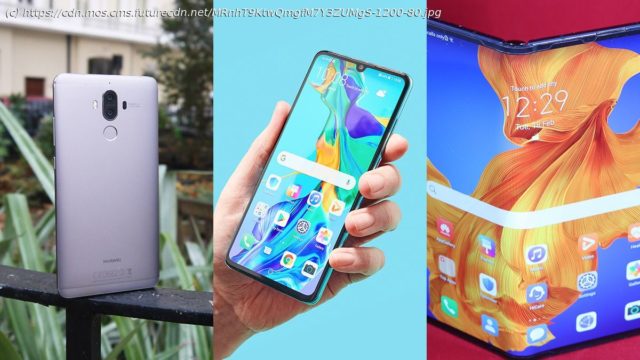Huawei has an impressive history of mobile devices behind it – and these are some of the best phones we’ve seen from the company.
When it comes to the best smartphones around, Huawei handsets are always somewhere in the conversation: the Chinese tech giant has helped push forward mobile phone development in all kinds of ways, from camera optics to innovations in device design. Here we’re going to look back on some of the best Huawei phones we’ve seen over the past few years, many of which have become classics of their type. It’s an interesting retrospective, and one that clearly shows the evolution of smartphones over time. As you’re probably aware, a trade ban in the US means that Huawei phones can’t currently be sold with Google apps on them or with access to the Google Play Store – but Huawei is facing the challenge head on, just as its faced many other challenges over the years. The history of Huawei phones goes back to 2010 and covers more than 230 handsets in total when you count all the variations and regional differences: for the sake of space, we’ll start out recap in 2015 and stick to the flagship P series, Mate series, and X series phones. With the P8, Huawei dropped the Ascend name from its flagship line of phones, making the naming a bit easier to keep track of. Back in 2015 we liked a lot of what the Huawei P9 had to offer, giving it 4 out of 5 stars in our review. The phone came running the Kirin 930 chipset made by Huawei itself, and that was paired with 3GB of RAM and up to 64GB of internal storage (a lot of space at the time). The rear camera was a single-lens 13MP affair, and software duties were handled by Android 5.0 Lollipop, with Huawei’s Emotion UI on top. In terms of size, the phone sported a 5.2-inch LCD screen, with a 1080 x 1920 pixel resolution. If you’ve got a long memory then you might also remember the cheaper Huawei P8 Lite and the more expensive Huawei P8 Max. This was the year when the Huawei Mate series really got into its stride: the Huawei Mate 8 was a phone that scored 4 stars out of 5 in our review, and it set the template that these Mate phones would follow in the years afterwards. First and foremost, that meant a bigger display – the Mate 8 came rocking a 6-inch,1080 x 1920 pixel LCD screen, so it was significantly larger than the one on the P series handset from the same year. This was back in the day when the term « phablet » was still in use, and the Huawei Mate 8 earned it. The device was powered by the Kirin 950 processor, and you could get it with up to 4GB of RAM and 64GB of internal storage. There was a single-lens 16MP rear camera, and Android 6.0 Marshmallow on board with the standard Huawei extras. On to the Huawei P9, which kept a lot of the design cues of the P8 that preceded it, but upgraded the rear camera to a dual-lens 12MP + 12MP rear camera – the P9 was one of the first handsets to feature more than one rear camera, something which is now commonplace even on budget phones. The LCD display stayed at 5.2 inches, and the display resolution stayed at 1080 x 1920 pixels. Under the hood there was a Kirin 955 processor, together with up to 4GB of RAM and up to 64GB of internal storage. The phone came with Android 6.0 Marshmallow on board, with the usual Huawei tweaks. In our review, we called the P9 « another accomplished smartphone » from the Huawei production line, highlighting the « innovative camera setup » and acknowledging that there was « plenty of power under the hood » too – it got 4 stars out of 5. Lite, Lite Mini, and Plus versions were also available. The Huawei Mate 9 was a phone that got just about everything right, including the design, the performance, and the camera. It was a sign of Huawei hitting its stride as a phone maker, especially outside of China, and we gave it 4 out of 5 stars in our review. That review was very complimentary about the build quality of the phone.
Home
United States
USA — software Huawei smartphones: a complete history of its phones ahead of the Huawei...






